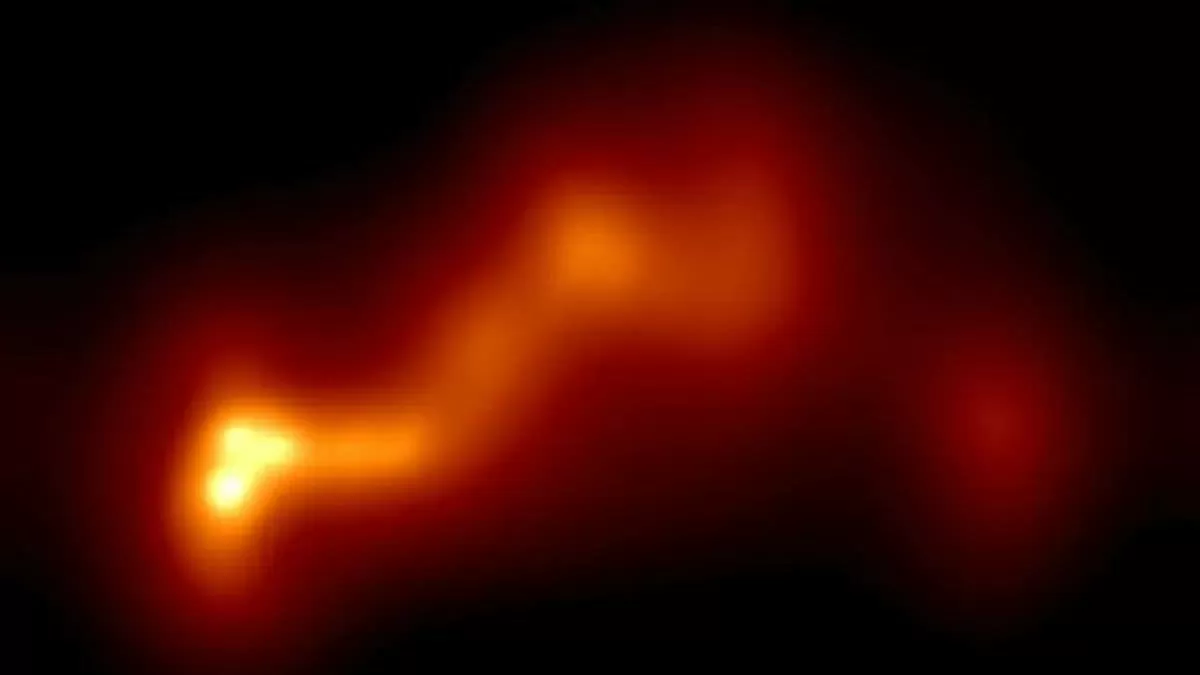Astronomers have recently made an astonishing discovery – the blazar OJ 287 hosts the most extreme binary black hole system ever found. This groundbreaking revelation was made possible by using a global radio telescope array, which captured an ultra-sharp image showing a dramatically bent jet. This is strong evidence of two supermassive black holes locked in orbit, and provides valuable insights into the mysterious world of black holes.
A blazar is a type of active galactic nucleus, where a supermassive black hole resides at the center of a galaxy and is surrounded by a spinning disk of gas and dust. This disk produces intense radiation, including high-energy jets of particles that shoot out into space at nearly the speed of light. Blazars are among the most luminous objects in the universe and are known to exhibit extreme variability in their emission levels.
Located around 3.5 billion light-years away from Earth, the blazar OJ 287 has been a subject of interest for astronomers for many years. It has a unique feature – it flares up in brightness every twelve years, giving scientists a rare opportunity to study its behavior in detail. The latest findings, published in the journal Astronomy and Astrophysics, have confirmed that this blazar is home to a pair of supermassive black holes orbiting each other.
This binary black hole system is unlike any other ever seen before. The two black holes have a combined mass of 18 billion times that of our sun, making them among the most massive black holes known in the universe. But what makes this discovery truly remarkable is the extreme closeness of the two black holes – they are only 1/10th of a light-year apart. To put this into perspective, this distance is equivalent to the distance between our sun and its closest neighbor, Proxima Centauri.
The team of astronomers used a technique called Very Long Baseline Interferometry (VLBI) to create an ultra-sharp image of the blazar’s jet. VLBI involves combining data from multiple radio telescopes spread across the globe to create a virtual telescope the size of Earth. This allows astronomers to achieve a resolution that is ten times better than that of the Hubble Space Telescope.
The resulting image showed a jet that was bent at an extreme angle, and this could only be explained by the presence of two supermassive black holes orbiting each other. The black holes are so close to each other that they distort the surrounding space-time, making the jet appear bent from our perspective on Earth. This provides strong evidence of the existence of a binary black hole system in OJ 287.
But this is not the only intriguing aspect of this binary system. The astronomers also observed that the jet from OJ 287 was twisting in a corkscrew-like pattern, which matched their predictions of the light emitted from a smaller companion black hole orbiting around the larger one. This twisting motion, along with the system’s 12-year flare cycle, is a strong indication of the presence of a smaller black hole in the system.
By studying the light and motion of the jet, astronomers have been able to make precise measurements of the smaller black hole’s mass and orbit. This provides a unique opportunity to test Einstein’s theory of general relativity, which describes the force of gravity and how it governs the movement of objects in space. The results of these tests will help us understand the nature of gravity and potentially even uncover new physics.
The discovery of this extreme binary black hole system in OJ 287 is a significant breakthrough in the field of astronomy. It not only adds to our understanding of black holes but also demonstrates the power of advanced technology and collaboration in unraveling the mysteries of the universe. With continued research, we hope to learn more about these enigmatic objects and unlock the secrets of the universe.

